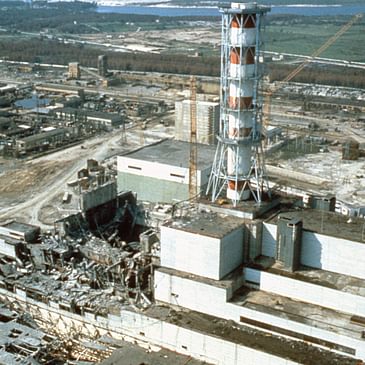In this episode Shelly is joined by Adam Higginbotham, author of New York Times best selling book Midnight in Chernobyl. Listen as Shelly and Adam talk about his book and about the biggest nuclear disaster in the world. Adam takes the time to share his own research in the Chernobyl nuclear power plant and the many events that led up to the accident.
They start off by talking about the beginning of Chernobyl which started out as an empty field and was intended to be the world’s biggest nuclear power plant. The manager of this project was Victor Bryukhanov who was joined by a series of technical specialists. However, by the time of the explosion, all of these specialists had left and were replaced with a man who was not trained as a nuclear specialist. Chernobyl was known to attract many nuclear engineers and was named on of the best Soviet postings during its time. They attracted these workers through offering housing in the city of Pripyat which was filled with many delicacies and entertainment.
The reactors built at Chernobyl were a unique soviet type known as the RBNK reactors. These differed greatly from those being built in the west and were produced much more quickly in larger sizes and numbers. This resulted in higher rates of danger, which was known by the Soviet Union but kept a secret from others. Adam points out how the job of the operators was a very physically taxing one due to the size and amount of reactors. These reactors also contained the tip effect which was designed in a way where the reactors would escalate before coming to a stop in the case of an emergency, which was one of the factors in the explosion.
Adam them moves on to talk about the explosion which happened on the night of April 26, 1986. On this specific night, a safety test had been scheduled to see if it was possible for water to continue circulating around reactors in the incident of a power cut. This test had been tried before and failed, so there was much pressure on this one to succeed and they were told to carry out the test at all costs. The BRNK had already been in operation for a while due to meeting quota which increased its instability during the test. Along with this, the shift of workers running the test was switched at the last minute. Many of the workers did not feel comfortable running the test but their objections were denied. During the test, the reactor was brought to unstable levels, causing the core to blow up.
After the explosion, Adam points out how many of the people, including Victor, could not comprehend the severity of the accident. Because of this, as the information was passed up to higher levels, the severity of the accident was not expressed. Along with this, the Soviet system resulted in no one wanting to bring bad news to a superior due to possible dismissal and imprisonment. This resulted in the report simply stating that there had been an explosion, the fire was out, and it was still being investigated. Adam concludes the episode by stating how this accident at Chernobyl revealed the secrecy and lies of the Soviet Union and played a big part in its fall. While they were filled with technological geniuses, the lack of morals resulted in the largest nuclear disaster in the world.
Links: Send an email to My Nuclear Life or visit their website.
Please leave a 5-star review on iTunes and subscribe to My Nuclear Life wherever you listen to podcasts.
Production costs for this episode were provided through National Science Foundation Grants PHY-1713816 & 2011267.


